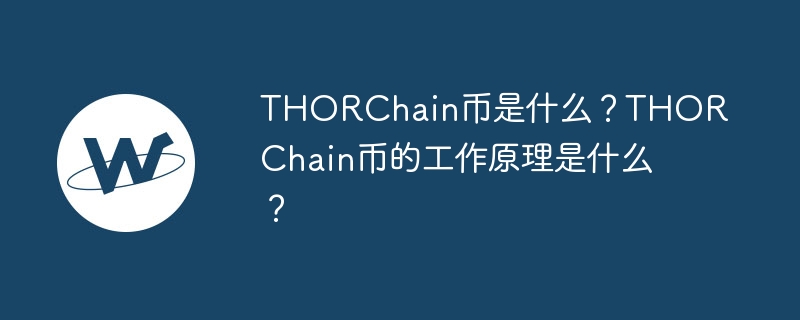What is THORChain coin? How does THORChain coin work?
- WBOYWBOYWBOYWBOYWBOYWBOYWBOYWBOYWBOYWBOYWBOYWBOYWBOriginal
- 2024-03-16 15:25:09906browse

THORChain: Cross-chain Liquidity Protocol
THORChain is a decentralized liquidity protocol that allows users to directly trade assets between different blockchains exchange without the need for a third-party intermediary. The goal of the protocol is to solve the complexity and high costs faced by cross-chain transactions.
Working Principle
THORChain implements cross-chain exchange through the following steps:
- Lock assets: Users deposit assets into THORChain’s liquidity pool.
- Synthetic Assets: THORChain creates a synthetic asset that is linked to the value of the user’s assets.
- Cross-chain exchange: Users can use synthetic assets to trade between different blockchains.
- Redeem assets: After the transaction is completed, users can redeem their original assets, minus a small transaction fee.
Key Features
- Decentralization: THORChain is run by a distributed node network, eliminating dependence on centralized exchanges.
- Cross-chain interoperability: Supports multiple blockchains, including Bitcoin, Ethereum, and Binance Smart Chain.
- No permission required: Anyone can participate in the THORChain network without permission or KYC.
- Low cost: Compared with centralized exchanges, THORChain provides lower transaction fees.
- Security: THORChain uses consensus mechanism and smart contracts to ensure the security of the network and the security of assets.
Use Cases
Use cases for THORChain include:
- Exchanging assets between different blockchains for arbitrage or portfolio diversification.
- Access DeFi protocols and applications on other blockchains.
- Reduce the complexity and cost of cross-chain transactions.
- Provide liquidity and earn trading fees.
The above is the detailed content of What is THORChain coin? How does THORChain coin work?. For more information, please follow other related articles on the PHP Chinese website!
Statement:
The content of this article is voluntarily contributed by netizens, and the copyright belongs to the original author. This site does not assume corresponding legal responsibility. If you find any content suspected of plagiarism or infringement, please contact admin@php.cn
Previous article:What is Lido DAO coin? How does Lido DAO coin work?Next article:What is Lido DAO coin? How does Lido DAO coin work?
Related articles
See more- Google's 72-bit quantum computer, is Bitcoin still safe?
- How to start Chongya Cookie Man Kingdom Beach Exchange?
- Justin Sun withdrew $60 million from Binance, with ETH accounting for the highest proportion, followed by AAVE, SHIB, etc.
- Bitcoin price prediction after 2024 halving: Will there be a surge?
- Interpretation of Binance's new platform Futures NEXT: 'National Minimum Living Security Game”, a 'prediction market” that guarantees profit without loss

